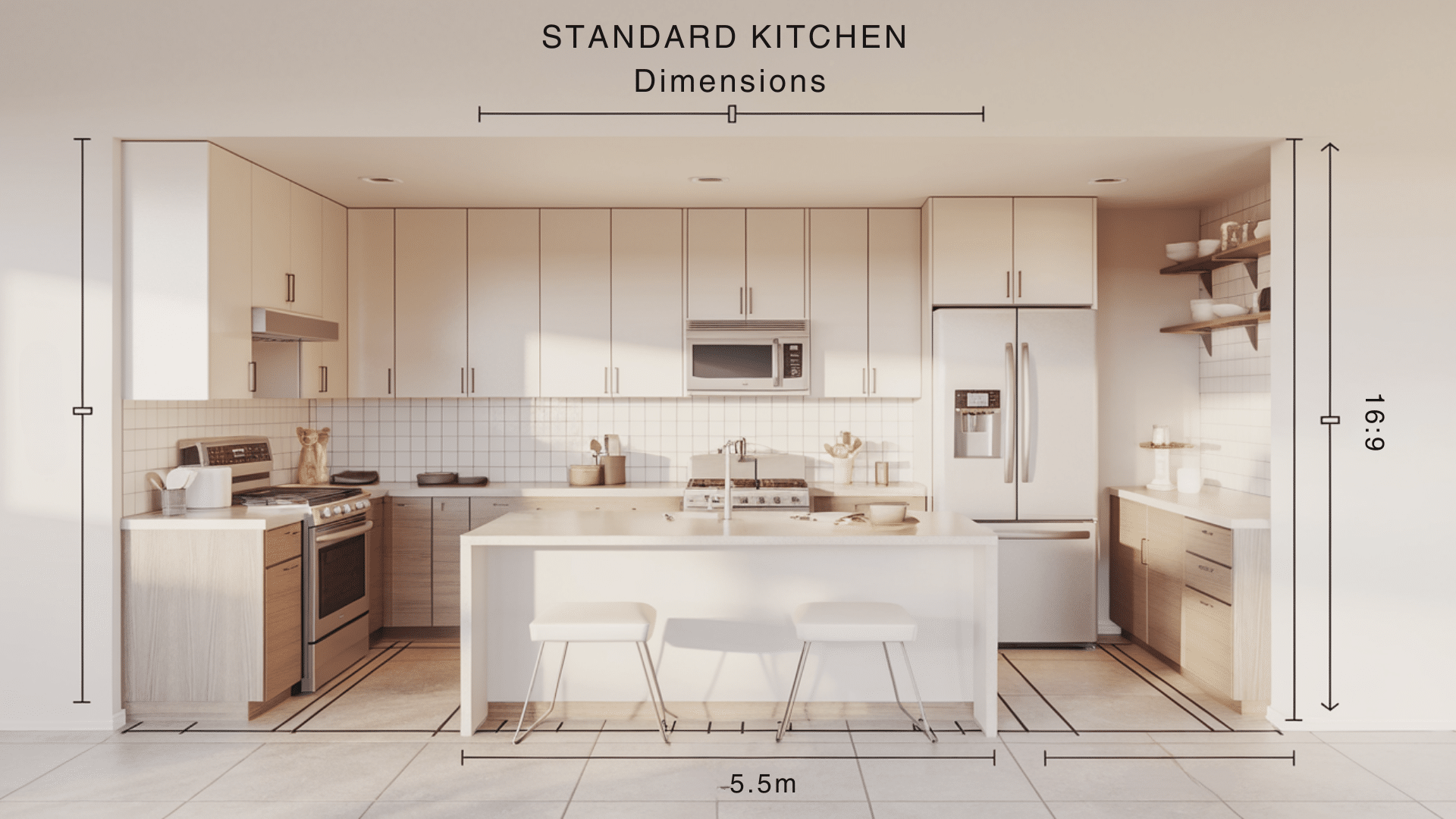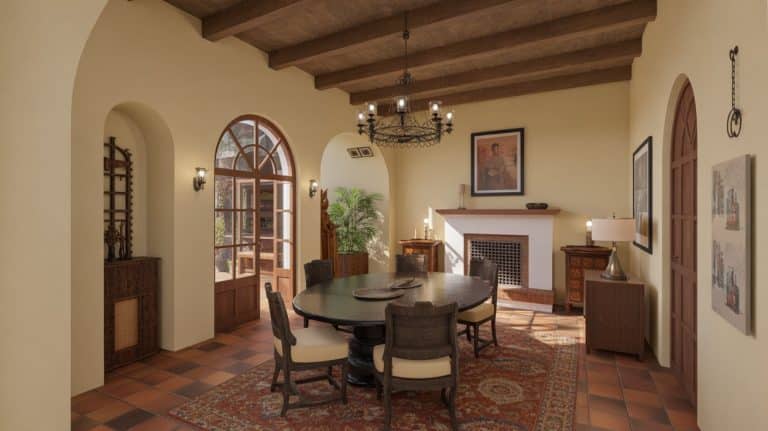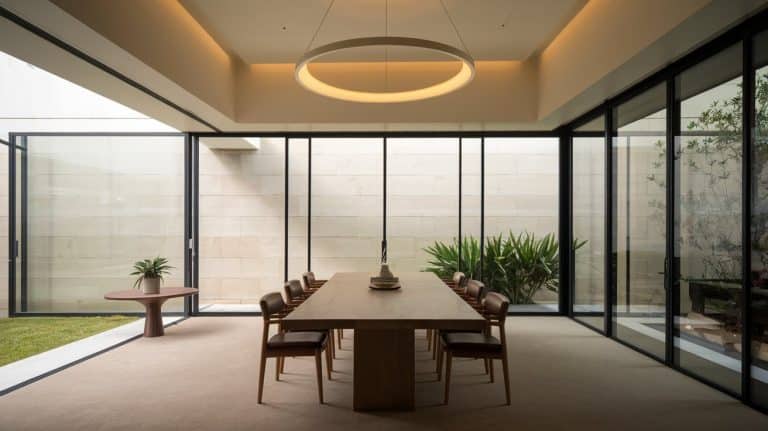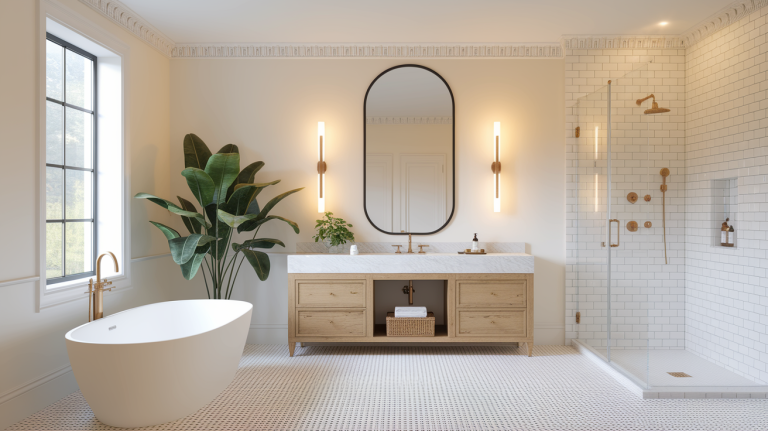How to Measure Standard Kitchen Dimensions
Do you spend too much time bumping into cabinets or stretching to reach countertops? Poor kitchen measurements could be the reason.
Most homeowners don’t realize that standard kitchen dimensions exist for a reason.
When kitchens follow these measurements, cooking becomes easier and safer. Yet many people struggle with spaces that just don’t feel right.
The good news? You can fix this. Understanding and applying standard kitchen dimensions will help you create a comfortable cooking space that works for you.
Your kitchen can become a place where everything is within easy reach.
Ready to learn the exact measurements that professional designers use?
Let’s look at how to measure your kitchen like an expert so you can start planning improvements today.
Key Kitchen Areas to Measure
The kitchen layout requires careful attention to four main areas for daily comfort and use:
1. Countertop Space
Your counter height should be 36 inches from the floor. Plan for at least 24 inches of depth for the main counter areas. Leave a minimum of 15 inches between the countertop and upper cabinets.
2. Cabinets (Upper and Lower)
Upper cabinets work best at 54 inches from the floor. Make them 12 inches deep. Lower cabinets need 24 inches of depth. Standard cabinet width ranges from 9 to 48 inches.
3. Kitchen Island
Allow 42 inches of space around each side of your island. The standard island height matches the countertops at 36 inches. For seating areas, lower the height to 30 inches.
4. Walkways and Traffic Flow
Keep main walkways 42 inches wide. Work aisles between counters need 48 inches for two cooks. A single cook can work with 42 inches. Entry points should be at least 32 inches wide.
These measurements create a kitchen that works well for cooking and moving around. Each area needs proper spacing to make your kitchen safe and practical.
Standard Dimensions for Key Kitchen Components
Planning a functional kitchen starts with understanding the right measurements for each component. Let’s explore the standard sizes that make kitchens work well.
1. Cabinets
Kitchen cabinets form the foundation of storage and need specific measurements. Lower cabinets stand 34.5 inches tall before adding countertops.
Once you put them on the counter, they reach the standard 36-inch height. Upper cabinets begin 54 inches from the floor and can extend up to 84 or 96 inches high.
For depth, upper cabinets take up 12 inches, while lower ones need 24 inches of space. Width options start at 9 inches and increase in 3-inch steps up to 48 inches.
Most kitchens use 30 or 36-inch wide cabinets as these sizes fit most spaces well.
2. Countertops
Your countertop height makes a big difference in comfort while cooking. The standard height sits at 36 inches from the floor, matching the top of your base cabinets. You’ll want 24 inches of depth to line up with your lower cabinets.
For areas where people eat, consider lowering the height to 30 inches to make sitting more comfortable. Keep 15 to 18 inches of space between your countertop and upper cabinets.
This gap lets you use small appliances and work comfortably.
3. Appliances
Kitchen appliances come in standard sizes to fit common spaces. Refrigerators typically measure 30 to 36 inches wide and stand 67 to 70 inches tall. Standard stoves take up 30 inches of width and match counter height at 36 inches.
Dishwashers fit into a 24-inch wide space and stand 34 inches tall. Microwaves vary more but usually span 24 to 30 inches in width and need 14 to 18 inches in height.
4. Sink
Your sink size affects both function and food prep space. Single-bowl sinks range from 24 to 30 inches wide, while double-bowl options need 32 to 36 inches. Most sinks are 8 to 10 inches deep and 22 to 33 inches long.
For good workflow, put at least 24 inches of counter space on one side of your sink and 18 inches on the other. This setup gives you ample room to work with dishes and prepare food.
These measurements create the blueprint for a well-designed kitchen. While these sizes work for most homes, you might need to adjust based on your specific space.
Take time to measure carefully before buying any components. Small changes in size can make a big difference in how well your kitchen functions.
Measuring the Kitchen Layout
Getting your kitchen layout right requires attention to detail and careful planning. Let’s explore the key steps to measure your space effectively for a well-functioning kitchen.
Measuring Walls for Cabinets and Countertops
The first step in kitchen planning starts with exact wall measurements. Begin in one corner and measure each wall section with care. You’ll need to note every window, door, and break in the wall line.
Take your tape measure and check the distance from floor to ceiling – this helps with cabinet placement. Don’t forget to spot and mark the locations of water pipes, gas lines, and electrical outlets.
Most people miss an important step: walls often lean or curve slightly. That’s why you should measure each wall three times – at the top, middle, and bottom. Use the smallest number when you plan your layout.
Pay special attention to spots that stick out, such as window frames and door trim. These small details make a big difference when fitting cabinets and counters flush against walls.
Open Spaces and Traffic Areas
Kitchen traffic patterns affect how well your space works day to day. Look at how people move through your kitchen and mark these paths on your plan.
The basic rule is to keep 42 inches open for walking between counters or appliances. When your kitchen hosts two cooks, bump that to 48 inches in work zones.
Door swings need careful planning, too. Map out how every door moves, including appliances. Your refrigerator door should open without blocking paths.
The kitchen entrance needs 32 inches of clear space. These measurements keep your kitchen safe and easy to use.
Component Clearance
Each kitchen item needs its breathing room. A refrigerator works best with 36 inches of space from nearby counters or appliances. Keep ovens 30 inches away from tall items like pantry cabinets.
Your sink needs different spaces – 24 inches on one side and 18 on the other. When you open your dishwasher, plan for 21 inches of clear space in front.
Heat safety matters, too. The space between your stovetop and upper cabinets should measure 15 inches minimum.
If you add a microwave above the counter, keep it 13 inches up. These gaps protect your cabinets and make cooking safer.
Taking time with measurements now prevents problems later. Double-check every number before you start buying cabinets or appliances.
These guidelines help create a kitchen that fits your space and meets your needs. With proper planning, your kitchen will serve you well for years to come.
Tips for Accurate Measurements
- Using the Right Tools: Start with a steel tape measure – it gives better results than cloth or plastic ones. Keep a level handy to find uneven spots on floors and walls. Use a pencil and paper to write down numbers right away. Get a laser measurement tool for tall spaces and long walls.
- Accounting for Room Irregularities: Check wall angles with a carpenter’s square. Look at wall curves by placing a straight edge against them. Measure the ceiling height in several spots – it might not be even. Find any floor slopes by placing your level in different areas.
- Double-checking Measurements: Take each measurement twice, at different times. Please write down the results separately and compare them. Ask someone else to check your work. Start at opposite ends of the room for your second round of measuring.
- Common Problem Areas: Check window sills and their trim carefully. Note any baseboards that stick out. Find pipes or ducts that might block cabinets. Look for spots where the floor isn’t level.
- Recording Methods: Draw a simple map of your kitchen. Mark all measurements on it right away. Take photos of tricky spots to reference later. Keep your notes clear and organized.
- Special Considerations: Find the high point of your floor – it affects cabinet height. Check door swings from all angles. Note where heating vents and electrical outlets sit. Mark spots where walls meet at odd angles.
Common Mistakes to Avoid
1. Underestimating Traffic Flow
Many homeowners make mistakes when planning kitchen traffic patterns. Tiny walkways block people from moving freely. Putting cabinets too close creates tight spots. Small paths between counters slow down cooking.
Fix these issues by:
- Making paths 42 inches wide for walking
- Adding 48 inches between work areas
- Keeping entry points 32 inches wide
- Testing traffic patterns with paper layouts
2. Ignoring Clearance Spaces for Appliances
Wrong clearance spaces cause daily problems. People often forget that appliances need room to work well. This affects how doors open and how you use your kitchen.
Key clearance rules:
- Fridge: 36 inches from counters
- Oven: 30 inches from tall items
- Dishwasher: 21 inches in front
- Microwave: 13 inches above counters
- Sink: 24 inches on one side, 18 on other
3. Not Measuring Correctly for Appliances
Wrong measurements lead to costly fixes. Many people forget to check appliance sizes before buying cabinets. Some miss checking if new items will fit through doors.
Important steps:
- Measure appliance width, height, and depth
- Include space for power cords
- Check door swing areas
- Plan for water and gas lines
- Measure doorways for delivery
Conclusion
Taking good measurements differentiates between a good kitchen and a great one. The right numbers help you plan a safe space for cooking and living.
Small details matter when measuring your kitchen. Every inch counts, from cabinet heights to walking spaces. These measurements affect how you move, work, and feel in your kitchen daily.
Remember to check each measurement twice. Pay attention to wall curves, floor slopes, and ceiling heights. Think about how doors open and where people walk most often.
A well-measured kitchen gives you years of cooking comfort. It lets you work without bumping into things or feeling cramped. Your time spent measuring now creates a better kitchen for tomorrow.
















пин ап вход: пин ап зеркало – пин ап вход
pin up azerbaycan: pin-up – pin-up casino giris
https://pinupaz.top/# pin up casino